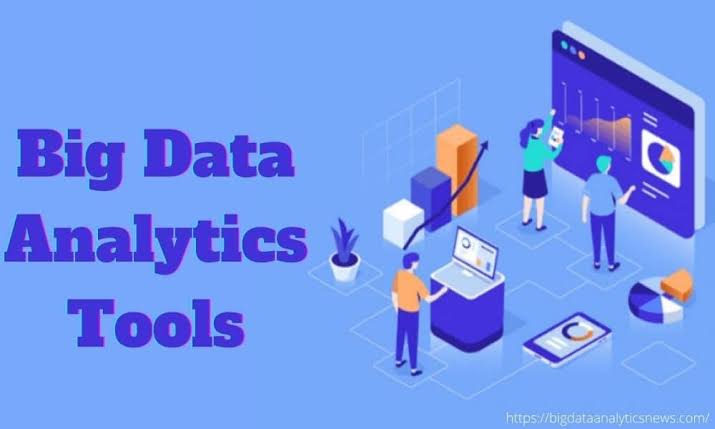The world of big data is vast and constantly evolving. With sheer volume of data being generated daily businesses need robust tools to analyze and make sense of this information. Big data analytics tools are essential for extracting actionable insights. They help in predicting trends and making informed decisions. Here are top ten big data analytics tools that are leading the industry
1. Apache Hadoop
Apache Hadoop is one of the most popular and widely used big data analytics tools. It is open-source framework that allows for the distributed processing of large data sets across clusters of computers. Hadoop uses a simple programming model. It is designed to scale up from a single server to thousands of machines. It consists of several components. These include Hadoop Common Hadoop Distributed File System (HDFS), Hadoop YARN and Hadoop MapReduce. These components work together to provide reliable scalable and efficient data storage and processing
2. Apache Spark
Apache Spark is another powerful open-source big data analytics tool that is known for speed and ease of use. It provides an interface for programming entire clusters with implicit data parallelism and fault tolerance. Spark can handle both batch processing and real-time data processing. This makes it versatile and efficient. It includes libraries for SQL streaming, machine learning and graph processing. This allows users to combine these capabilities seamlessly in single workflow
3. Tableau
Tableau is a leading data visualization tool that helps users transform data into actionable insights through interactive and shareable dashboards. It is known for its ability to handle big data from various sources and its user-friendly interface. Tableau's drag-and-drop functionality makes it easy for users to create visualizations, and its powerful data engine can handle large data sets with ease. Tableau also integrates with many other big data tools and platforms, enhancing its versatility.
4. QlikView
QlikView is a robust data discovery and visualization tool that allows users to analyze data and make informed decisions quickly. It features an associative data model that enables users to explore data from different angles and discover hidden insights. QlikView provides a range of visualization options, including charts, graphs, and maps, and its powerful data indexing engine ensures fast and efficient data retrieval. It also offers seamless integration with various data sources and platforms.
5. Microsoft Power BI
Microsoft Power BI is a suite of business analytics tools that deliver insights throughout your organization. It provides interactive visualizations and business intelligence capabilities with an interface simple enough for end users to create their reports and dashboards. Power BI can connect to hundreds of data sources, including big data platforms, and it offers robust data modeling and transformation capabilities. Its integration with Microsoft Azure and other Microsoft services enhances its functionality and scalability.
6. SAS
SAS (Statistical Analysis System) is a comprehensive data analysis tool that provides advanced analytics, multivariate analyses, business intelligence, and data management capabilities. SAS is known for its ability to handle large data sets and its powerful statistical analysis features. It offers a range of products for different analytics needs, including SAS Visual Analytics, SAS Enterprise Miner, and SAS/STAT. SAS's user-friendly interface and extensive support resources make it a popular choice for businesses and researchers.
7. IBM Watson Analytics
IBM Watson Analytics is a smart data discovery tool that uses natural language processing and machine learning to help users analyze and visualize data. It provides automated data preparation, predictive analytics, and cognitive capabilities, making it easy for users to uncover insights and trends. Watson Analytics integrates with various data sources and platforms, and its intuitive interface allows users to ask questions and get answers in plain language.
8. Google BigQuery
Google BigQuery is a fully managed, serverless data warehouse that enables super-fast SQL queries using the processing power of Google's infrastructure. BigQuery can handle large data sets and provides real-time analytics capabilities. It integrates with various Google Cloud services and other data tools, making it a versatile and powerful option for big data analytics. BigQuery's pricing model is based on the amount of data processed, making it cost-effective for businesses of all sizes.
9. Apache Hive
Apache Hive is a data warehouse software project built on top of Apache Hadoop for providing data query and analysis. Hive provides a SQL-like interface to query data stored in various databases and file systems that integrate with Hadoop. It is designed for managing and querying only structured data that is stored in tables. Hive is highly scalable and extensible, making it suitable for a wide range of big data applications.
10. Cloudera
Cloudera is a comprehensive big data platform that provides tools for data storage, processing, and analysis. It offers a suite of products, including Cloudera Data Platform (CDP), Cloudera Data Science Workbench, and Cloudera DataFlow. Cloudera's platform is designed to work with various big data tools and frameworks, including Hadoop, Spark, and Hive, providing a unified and scalable solution for managing and analyzing big data.
Conclusion
The big data analytics landscape is rich with tools that cater to different needs and preferences. Whether you are looking for powerful data processing capabilities, advanced statistical analysis, intuitive data visualization, or real-time analytics, there is a tool that can meet your requirements. The ten tools listed above are among the most popular and widely used in the industry, each offering unique features and capabilities. By leveraging these tools, businesses can gain valuable insights, make informed decisions, and stay competitive in the ever-evolving data-driven world.










